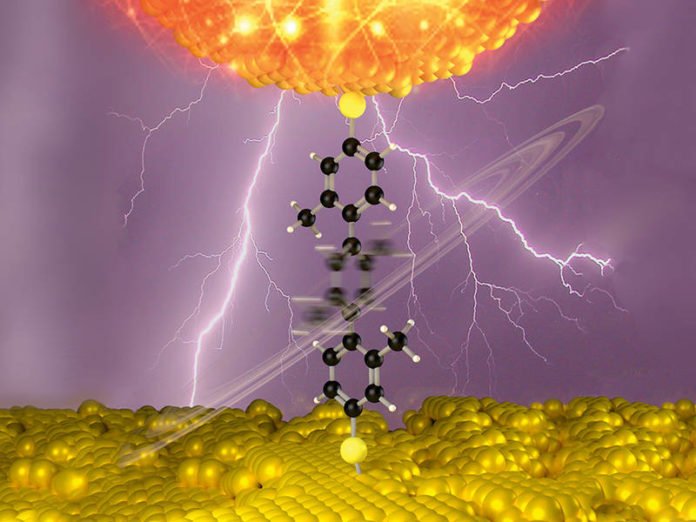The improvement of new electronic advances drives the relentless decrease of useful component sizes. With regards to a worldwide collective exertion, a group of physicists at the Technical University of Munich has prevailing to utilize single atoms as exchanging components for light signals.
Switching with a molecule could benefit future electronics to become ultimate limit of miniaturization. Using the method, scientists have demonstrated molecular nanoswitches that can be toggled between two structurally different states using an applied voltage.
The method enables them to create accurate electrical contacts with molecules in strong optical fields and to address them using an applied voltage. At a potential difference of around one volt, the molecule changes its structure: It becomes flat, conductive and scatters light.
For this process, scientists used molecules that change their structure in a specific way when they get charged. They arranged the molecules on a metal surface and contacted using the corner of a glass fragment with a very thin metal coating as a tip. This becomes a point of electrical contact, light source, and light collector.
Next, scientists utilized the fragment to direct laser light to the molecule and measure tiny spectroscopic signals that vary with the applied voltage.
Nanoscientist Joachim Reichert from the Physics Department of the Technical University of Munich said, “Establishing reliable electric contacts between individual molecules is extremely challenging from a technical point of view. We now have successfully combined this procedure with single-molecule spectroscopy, allowing them to observe even the smallest structural changes in molecules with great precision.”
“One goal of molecular electronics is to develop novel devices that can replace traditional silicon-based components using integrated and directly addressable molecules. Thanks to its tiny dimensions, this nanosystem is suitable for applications in optoelectronics, in which light needs to be switched by an electrical potential.”
Th paper is published in the Journal of the American Chemical Society.
